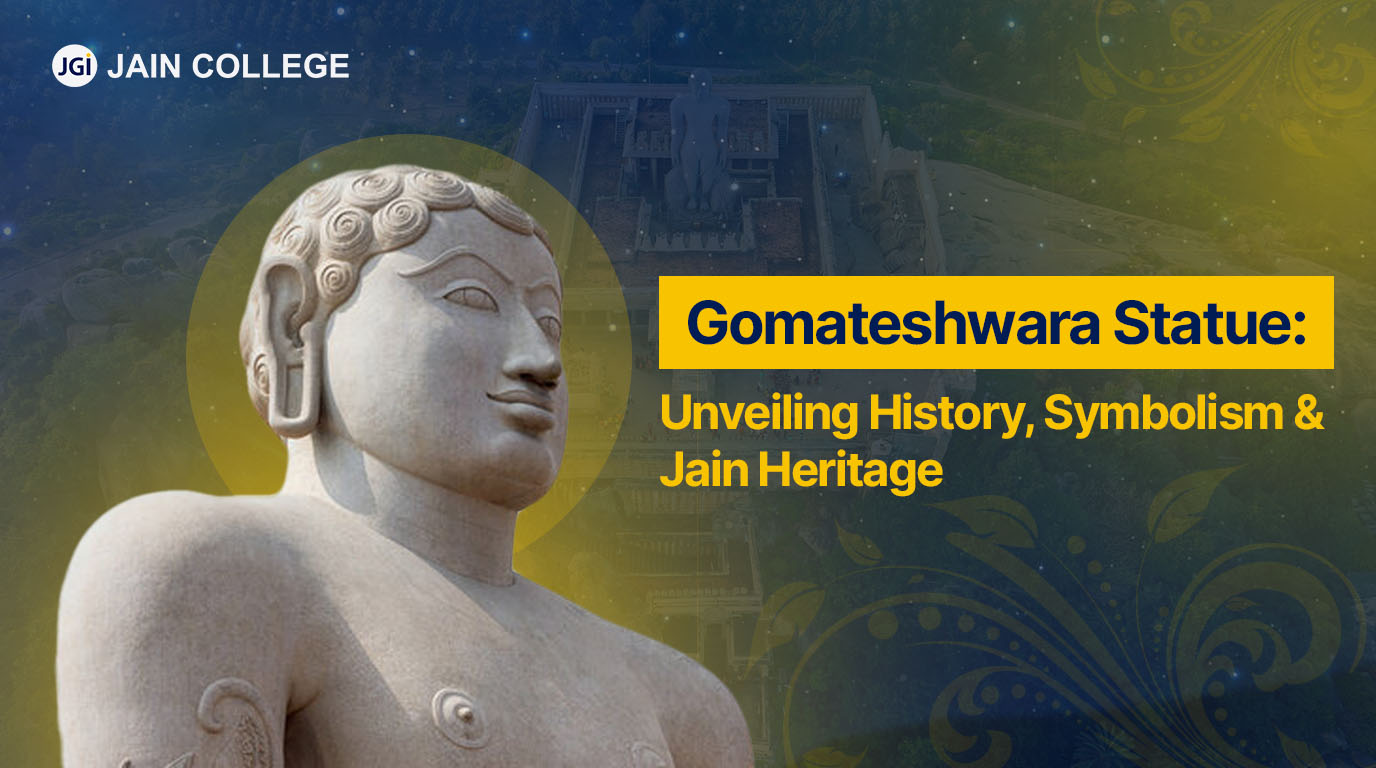
India is filled with incredible historical and religious landmarks, and one of them is the Gomateshwara Statue (For more details, visit Gomateshwara Statue on Wikipedia.) in Shravanabelagola, Karnataka. This massive, single-stone statue stands as a symbol of Jain heritage, faith, and stunning craftsmanship. Dedicated to Bahubali, a revered figure in Jainism, the statue stands as a testament to India's rich cultural and religious history.
Perched on Vindhyagiri Hill, this 57-foot statue is one of the world's tallest monolithic sculptures, attracting pilgrims, historians, and tourists from all over. Every twelve years, the grand Mahamastakabhisheka Festival, a sacred Jain ritual, enhances its spiritual importance.
The Gommateshwara statue is a 57-foot (17 m) tall monolithic statue located on Vindhyagiri (Indragiri) Hill in Shravanabelagola, Karnataka. Built in 983 CE by Chavundaraya, a minister of the Western Ganga dynasty, it is carved from a single granite block. One of the tallest monolithic statues of the ancient world, it symbolizes Jain principles of peace, non-violence, and renunciation.
The Gomateshwara Statue is located atop Vindhyagiri Hill in Shravanabelagola, Karnataka.
The Gomateshwara Statue symbolizes Jain heritage, spirituality, and architectural brilliance.
The Gomateshwara Statue stands 57 feet (17.4 meters) tall, making it one of the largest monolithic statues in the world.
Monolithic Structure – The statue is the largest monolithic statue in India and among the tallest in the world, carved from a single block of granite.
Height – It stands approximately 57 to 58 feet (17.4 meters) tall.
Posture – The statue is depicted in the Kayotsarga (meditative standing) posture, symbolizing deep spiritual discipline.
Realistic Expressions – The serene expression on Bahubali’s face conveys deep meditation and enlightenment.
Symbolism – The statue is entwined with vines around its limbs, signifying complete renunciation and unwavering meditation.
Inscriptions – Several ancient inscriptions in Kannada, Tamil, and Sanskrit surround the base of the statue, describing its history and significance.
Positioning – The statue is elevated atop Vindhyagiri Hill and can be reached by climbing 600+ steps.
One of the most spectacular rituals associated with the Gomateshwara Statue is the Mahamastakabhisheka Festival, held once every 12 years. During this grand event, the statue is anointed with water, milk, turmeric, sandalwood paste, saffron, and vermilion, creating a breathtaking visual spectacle. Thousands of devotees and tourists witness this grand ceremony, making it one of the most significant religious events in Jainism.
Sacred Bathing: The statue is bathed with milk, saffron, turmeric, ghee, sandalwood paste, and other holy substances.
Procession: Pilgrims and monks participate in processions, chanting hymns and prayers.
Next Celebration: Expected in 2030.
This event garners massive national and international attention, reinforcing the religious and cultural importance of the site.
The Gomateshwara Statue is more than an architectural wonder; it is a beacon of spirituality and cultural heritage.
Spiritual Experience: Witness an embodiment of Jain values—non-violence, renunciation, and enlightenment.
Architectural Grandeur: Marvel at the world's tallest monolithic statue.
Historic Significance: Immerse in over a millennium of history.
Panoramic Views: Enjoy breathtaking views from Vindhyagiri Hill.
Explore the rich symbolism and historical context of the Gomateshwara Statue. Stay tuned for more insights into India's art, history, and cultural heritage!
The Gomateshwara Statue was built by Chavundaraya, a minister and commander-in-chief of the Western Ganga Dynasty, in 983 AD
The Gomateshwara Statue was built by Chavundaraya, a minister and commander-in-chief of the Western Ganga Dynasty, in 983 AD
The Gomateshwara Statue is located at Shravanabelagola, in the Hassan district of Karnataka, India.
The statue stands at 57 feet (17.4 meters) tall, making it one of the largest monolithic (carved from a single stone) statues in the world.
The statue represents Bahubali, a revered figure in Jainism, who attained moksha (liberation) through meditation and renunciation. It symbolizes Jain principles of non-violence, self-discipline, and spiritual enlightenment.
The Mahamastakabhisheka is a grand Jain festival held every 12 years, during which the Gomateshwara Statue is anointed with milk, turmeric, saffron, and sandalwood paste in a sacred ceremony.
Tourists can reach Shravanabelagola via road, rail, and air. The nearest major city is Bengaluru (Bangalore), around 145 km away, with good connectivity by bus and train.
The vines and anthills covering Bahubali’s legs symbolize his years of deep meditation, detachment from the material world, and complete surrender to spirituality.
No, there is no entry fee to visit the Gomateshwara Statue, but visitors may need to pay a small fee for parking or camera usage.
The best time to visit is between October and March, when the weather is pleasant. If possible, visiting during the Mahamastakabhisheka Festival (held every 12 years) offers a unique experience.

JAIN PU College, a part of the renowned JGI Group, is committed to empowering students with quality education.
Beyond academics, the college ensures its online content reflects the same standard of excellence. Every blog and article is meticulously vetted and proofread by subject matter experts to ensure accuracy, relevance, and clarity. From insightful educational topics to engaging discussions, JAIN PU College's content is crafted to inform, inspire, and add value to its readers, reflecting the institution's commitment to intellectual growth and innovation.
View all Blogs